Gallbladder Removal
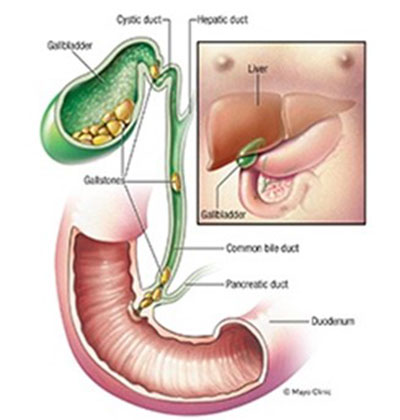
The gallbladder is a small, pear-shaped organ located beneath the liver, where it stores bile, a digestive fluid essential for breaking down fats in the diet. While the gallbladder stores bile, it does not produce it. The liver is responsible for bile production, which flows through the bile duct into the intestine to aid digestion. The gallbladder's function of storing bile was more important in ancient times, when humans had longer gaps between meals. In modern life, where we eat more frequently, this function is no longer necessary, and the gallbladder can be safely removed without impacting digestion.
Gallstones
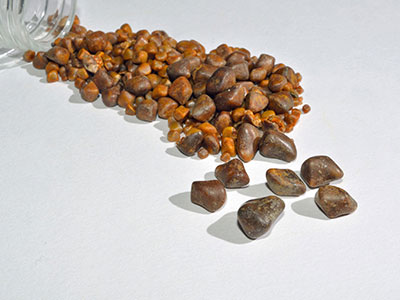
Around 20% of people develop gallstones, and the risk increases to 30% in individuals who are obese, female, or have a family history of the condition. Gallstones form when the balance of substances in bile, such as cholesterol, bile salts, lecithin, and bilirubin, becomes disrupted. This imbalance causes the bile to become "lithogenic," meaning it forms crystals that eventually develop into stones. Gallstones can range in size from tiny grains of sand to large, golf ball-sized stones. Some people have only one gallstone, while others may develop many.
Gallstones can cause chronic irritation to the lining of the gallbladder, a condition known as chronic cholecystitis, which may make you feel fatigued and unwell. They can also block the neck of the gallbladder, leading to biliary colic—a sudden, intense pain in the upper abdomen that may radiate to the back or right shoulder. This pain is often accompanied by nausea and typically occurs 20 to 30 minutes after eating, particularly fatty or oily meals. This happens because the hormone CCK (cholecystokinin) is released after eating, causing the gallbladder to contract. If a stone is blocking the gallbladder's neck during this contraction, it causes pain.
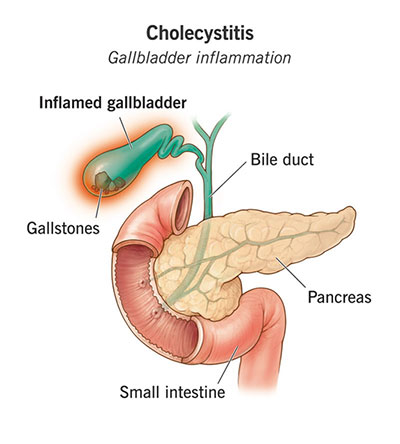
If the stone remains lodged for several hours, the gallbladder may become inflamed and infected, a condition called acute cholecystitis. This causes sharp pain, especially on the right side of the abdomen, and is often accompanied by fever. Acute cholecystitis typically requires hospitalization for intravenous antibiotics and removal of the gallbladder. In more severe cases, if a stone becomes deeply impacted, the gallbladder may become gangrenous, a life-threatening emergency that demands immediate surgical intervention.
Additionally, gallstones can migrate into the bile duct, potentially causing jaundice or blocking the pancreatic duct, which can lead to pancreatitis.
Treatment
While various attempts have been made to dissolve gallstones, these methods have generally been ineffective. The only reliable treatment for symptomatic gallstones is gallbladder removal, or cholecystectomy, which is recommended for individuals with persistent or severe symptoms. The primary goal of this surgery is to prevent further episodes of pain and to avoid complications like infection or pancreatitis. Since bile is produced by the liver, not the gallbladder, its removal does not affect the digestion of fats, and patients can usually return to a normal diet after recovery.
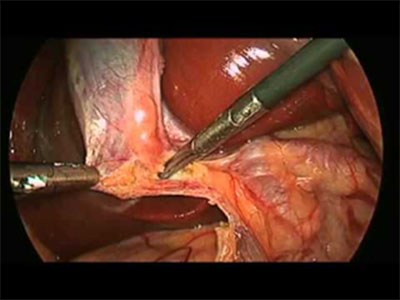
Cholecystectomy is typically performed using laparoscopic (keyhole) surgery, which involves four small incisions. The procedure takes about one hour under general anaesthesia. The gallbladder is retracted, and the cystic duct and artery are clipped and divided to remove the organ. After the gallbladder is removed, it is sent to a pathologist for examination to check for any signs of inflammation.
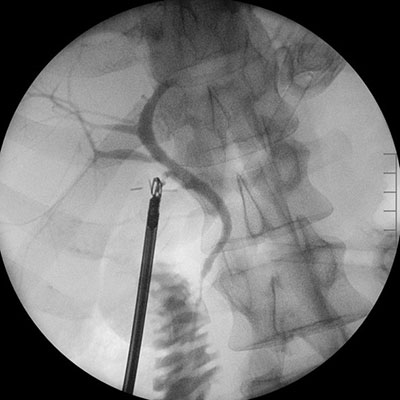
An intraoperative cholangiogram, an X-ray of the bile ducts, is often performed during the surgery to check for any stones that may have moved into the bile duct. If stones are found within the bile ducts, they are removed either during the surgery using a small basket or, in most cases, with a follow-up procedure called an ERCP (Endoscopic Retrograde CholangioPancreatography) the next day.
Most patients can undergo cholecystectomy as day surgery, although many prefer to stay overnight for observation. Patients can usually resume driving after 3 days and return to work within 5-7 days, provided the job is not physically demanding. There are no special dietary restrictions following surgery, and you can return to your normal diet right away.
Risks of Gallbladder Removal
Cholecystectomy is considered a safe and effective procedure, with a complication rate of less than 1%. However, as with any surgery, there are general risks such as bleeding, infection, blood clots, and reactions to anaesthesia. Specific risks associated with gallbladder removal include bile leaks or injury to the bile duct system. If these complications occur, they are treated by draining any accumulated bile and performing an ERCP to stop the leakage.
A rare side effect of gallbladder removal is Post Cholecystectomy Syndrome, which affects about 1% of patients. This condition causes loose stools, which is thought to occur due to bile salts irritating the small intestine. While the condition usually resolves over time, cholestyramine, a medication that binds to bile salts, can help manage the symptoms.
